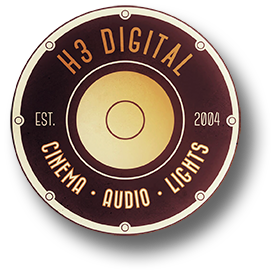Lets start with the obvious, TV companies like Samsung, LG and Sony need to sell new TV models each year to keep that part of their business running. You will never hear a store salesperson saying "Oh your TV you bought 2 years ago is still great", there is always a new must-have technology. Much the same as Apple releasing a new phone every year (and slowing down the old ones), their businesses rely on exciting, next big leap technologies. They must entice consumers into wanting to have the amazing home cinema experience these new technologies promise.
So we've had High Definition, which once the dust settled has had probably the greatest impact in viewing quality since the switch from Black and White to Colour TV some 50 years ago. TV resolution had stayed the same for so many years that when the change came about to something much closer to how our eyes make out detail in real life the effect on perceived quality was quite dramatic
Manufacturers are touting HDR as the next big thing in TV
More recently came 4k or Ultra HD, which quadrupled the screen pixels over high Definition, yet felt like only an incremental gain in quality. This is down to biology, our eyes, which perceive detail, can only derive so much detail from an image size. So until you get to very large screen sizes we cant perceive that much of an improvement in quality over High Definition.
A similar thing happened with phones, once it was all the rage to trumpet higher resolutions as the main reason to upgrade, Indeed Retina became an important buzzword for Apple. Mobile phones have progresses and passed the stage whereby bigger increases in resolution now only show a small increase in perceived quality.
So now most Tvs are HD or 4K, there needs to be something new to entice you to buy a new TV set, that's where HDR steps in. But what exactly is it?
HDR stands for High Dynamic Range. It is a technology that tells your screen with encoded data what the lightest and darkest parts of an image are so that the screen can dim those parts individually and dynamically. Every image has a mix of darker and brighter parts, think of scenes with shadows, in a dark room with a light to one side or sunsets and sunrises. Basically with HDR technology the image contains data that tells your TV to turn down or up the light intensity in those parts of the image (this is not the same as the brightness setting of your TV).
An Identical TV image without (Left) and with (Right) HDR
Previously your TV had to use one overall light intensity for the entire image, so a scene set in the shadows would dim the light intensity of the whole image. Whilst you could then make out more detail in the shadows, any brighter area in the scene would have it's colours and detail muted and washed out.
Now with HDR, your TV can dim the intensity of light in the area of the scene in the shadows seperately (dynamically) from the parts of the scene not in the shadows. This is a much more natural looking image because in real life those seperate parts of our visual image would have different light intensity to our eyes.
HDR images shown on HDR TV's have much better detail in the shadows, much better colours and contrast in images where there are bright colours or bright lighting, the picture will POP more. What does POP Mean? An image that POPS is more striking, prominent and defined than an image that doesn't.
Currently the dust has not settled on exactly how HDR is meant to be implemented in the TV world, there are - much the same way as when HD first came out - competing standards and classifications. There are two competing formats one from Dolby, called Dolbyvision which requires a specially licensed Dolby chip and an open format called HDR 10.
There are a number of technical caveats to get HDR up and running at home and these primarily are that the;
TV must be HDR
Souce must be HDR
HDMI Cable must be at least HDMI 2.0
Please note that here in Thailand not all net services are available through Thai ISPs. TVs are now available and being touted with HDR, Netflix and Amazon prime support HDR on many devices such as Apple TV, Fire Stick, Chromecast Ultra and both the Sony PS4 and Xbox One S gaming consoles support HDR. There are also Blu Ray discs and players that support HDR but I would suggest staying away from disc technology as streaming is likely where the future lies.
So that's what HDR is. Would I buy a TV with HDR? Sure it's a great addition and improves image quality.
Am I about to go and buy a new TV here in Thailand because mine doesn’t have HDR?
No - Not yet, I think there are still a few niggles to work through and in a year or two it will be standard on modern TV's and we will have access to more Thai sources.





